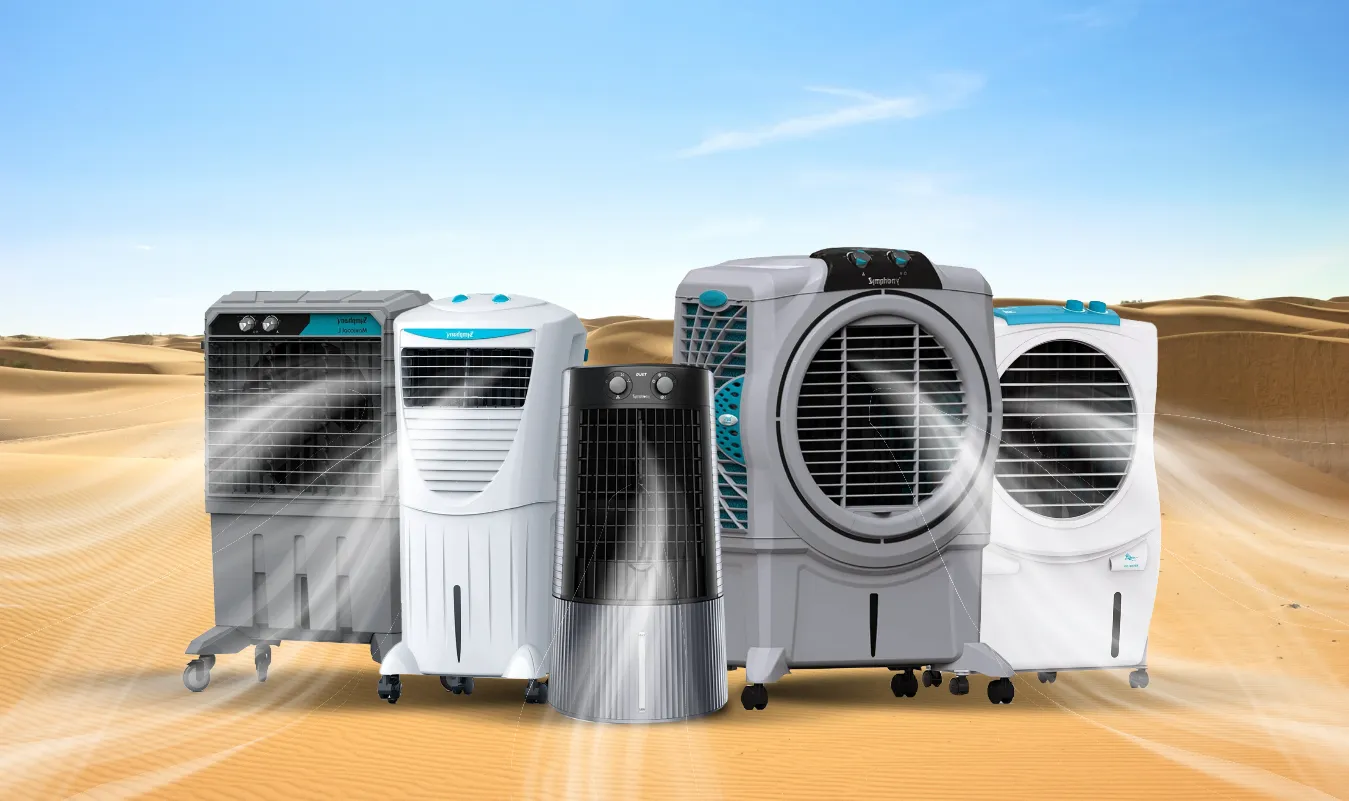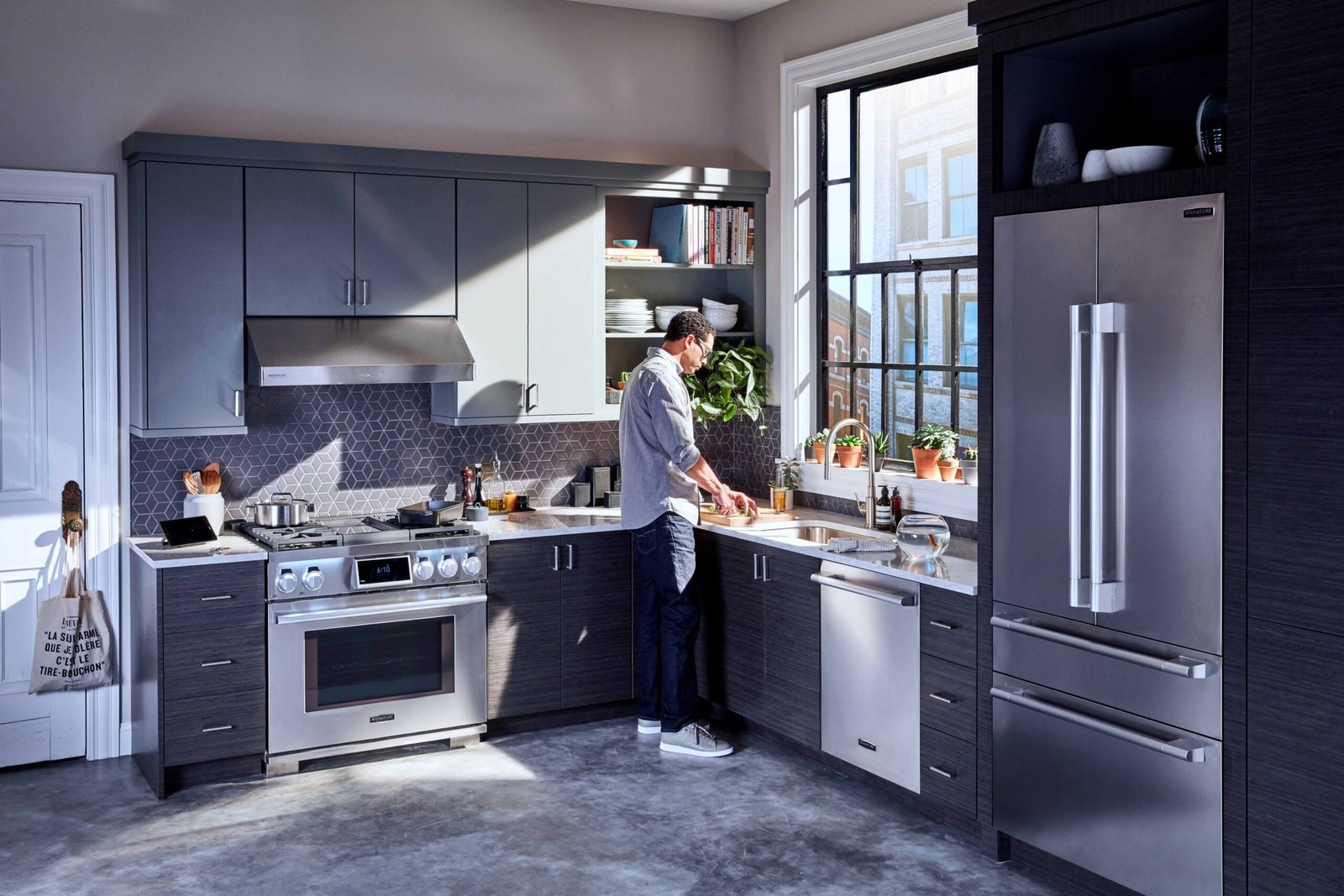Baking Ovens Electric vs Gas – Complete Buying Guide

Whether you’re a passionate home baker or simply want to upgrade your kitchen appliances, choosing the rightbaking oven is crucial for culinary success. The age-old debate between electric ovens vs gas ovens continues to puzzle homeowners across Pakistan. Should you invest in an electric baking oven for precise temperature control, or opt for a gas oven for faster heating and lower operating costs?
At Jalal Electronics, Pakistan’s most trusted electronics retailer, we understand that selecting the perfectkitchen oven involves more than just comparing prices. This comprehensive guide will walk you through everything you need to know about electric vs gas baking ovens, including features, energy consumption, pricing, and expert recommendations to help you make an informed decision.
Understanding Baking Ovens
A baking oven is an essential kitchen appliance designed to cook food using dry heat. Modern ovens come in various types, sizes, and fuel sources, each offering unique advantages for different cooking styles and household needs.
What is an Electric Baking Oven?

An electric oven uses electric heating elements—typically two: one at the bottom for baking and one at the top for broiling. When you set your desired temperature, electricity flows through these metal coils, heating them to a bright orange glow. The thermostat monitors temperature constantly, cycling the heating elements on and off to maintain consistent heat throughout the cooking chamber.
Key Features of Electric Ovens:
- Dual heating elements (top and bottom)
- Precise digital temperature control
- Even heat distribution
- Self-cleaning options in premium models
- No open flame or combustion gases
- Requires a 220V electrical connection
What is a Gas Baking Oven?
A gas oven operates using natural gas or LPG (Liquefied Petroleum Gas) as its fuel source. Gas enters through your home’s main line, combines with air in a mixer tube, and ignites to create a blue flame at the burner. The flame intensity is controlled directly via the control knob, providing immediate heat adjustment.
Key Features of Gas Ovens:
- Open flame heat source
- Instant temperature response
- Moist heat environment (water vapor from combustion)
- Lower operating costs in gas-available areas
- Works during electricity outages
- Requires a gas line connection
Electric vs Gas Baking Ovens-Comprehensive Comparison

Understanding the difference between electric and gas ovens helps you choose the best oven for baking based on your specific requirements.
1. Heat Distribution & Baking Performance
| Feature | Electric Oven | Gas Oven |
| Heat Distribution | Extremely even throughout | Can have hot spots |
| Temperature Consistency | Highly consistent | Slight fluctuations possible |
| Humidity Level | Dry heat environment | Moist heat (water vapor) |
| Best For | Cakes, cookies, pastries | Bread, pizza, and roasts |
| Preheating Time | 10-15 minutes | 5-10 minutes (faster) |
| Temperature Control | Precise digital control | Good but less precise |
Electric ovens are favored for baking due to their even heat distribution, making them ideal for cakes, cookies, and delicate dishes that require precise temperatures. The consistent dry heat ensures uniform browning and prevents undercooking.
2. Energy Consumption & Operating Costs
One of the most critical factors when choosing between gas vs electric ovens is long-term energy costs.
Electric Oven Power Consumption:
| Oven Size | Wattage | Cost per Hour* | Monthly Cost** |
| Small (25-30L) | 1500-2000W | ₨36-48 | ₨1,080-1,440 |
| Medium (45-50L) | 2000-2500W | ₨48-60 | ₨1,440-1,800 |
| Large (100L) | 2500-3000W | ₨60-72 | ₨1,800-2,160 |
Gas Oven Operating Costs:
According to energy efficiency data, gas ovens cost approximately 10-30% less to operate than electric ovens, with average monthly costs around ₨600-900 for similar usage patterns.
Energy Efficiency Statistics:
Research shows that 74% of consumed energy is transferred to food in electric ovens, while gas ovens transfer only 40% of their energy to food. However, because natural gas costs significantly less per unit of energy than electricity in Pakistan, gas ovens still maintain lower operating costs despite lower efficiency.
According to the U.S. Department of Energy, electric stoves and ovens account for only 1.8-2.8% of total household electricity consumption, meaning the impact on your overall utility bill, while important, isn’t as dramatic as heating or cooling systems.
3. Installation & Setup Requirements
Electric Ovens:
- Require a 220V electrical outlet
- Simple plug-and-play installation
- Can be installed anywhere with power access
- No special permits needed
- Installation cost: ₨2,000-5,000
Gas Ovens:
- Require natural gas line connection or LPG supply
- Professional installation mandatory
- Safety inspections necessary
- Ventilation requirements
- Installation cost: ₨5,000-10,000
4. Safety Considerations
Electric Oven Safety:
- No combustion gases or carbon monoxide
- No risk of gas leaks
- Safer for indoor air quality
- Lower fire risk
- Hot surfaces remain dangerous
- Electrical hazards if improperly wired
Gas Oven Safety:
- Visible flame indicates operation
- Instant heat cutoff when turned off
- Carbon monoxide and nitrogen dioxide emissions
- Gas leak risks
- Requires adequate ventilation
- Open flame fire hazard
5. Cooking Versatility & Features
Modern Electric Ovens Offer:
- Multiple cooking modes (bake, broil, convection, roast)
- Digital displays and timers
- Self-cleaning pyrolytic functions
- Temperature memory settings
- Internal lighting
- Even heat for delicate baking
Modern Gas Ovens Provide:
- Quick preheating (saves time)
- Instant temperature adjustments
- Better moisture retention
- Excellent for roasting meats
- Works during power outages
- Professional-style cooking experience
Electric vs Gas Oven: Which is Better for Baking?
The question “Which is better gas or an electric oven?” depends on your specific baking needs and circumstances.
Choose an Electric Baking Oven If:
- You’re a serious baker: Cakes, pastries, and cookies require precise, even heat
- You prioritize consistency: Digital controls ensure repeatable results
- No gas line available: Many Pakistani homes lack gas connections
- Safety is paramount: No combustion gases means cleaner indoor air
- You prefer modern features: Self-cleaning, convection, multiple modes
- Energy efficiency matters: A Higher percentage of energy reaches the food
Choose a Gas Oven If:
- Gas is readily available: Regions with a reliable natural gas supply
- Lower running costs matter: Significant savings over time
- You cook large roasts: Moist heat keeps meats tender
- Faster preheating needed: Busy kitchens benefit from quick readiness
- Power outages are common: Gas ovens work without electricity
- You bake bread regularly: Humid environment benefits crusty breads
Baking Oven Price in Pakistan 2025
AtJalal Electronics, we offer competitive prices on premium electric ovens and cooking ranges (which include gas ovens) from trusted international and local brands.
Electric Baking Ovens Price List
| Model | Capacity | Wattage | Features | Original Price | Sale Price |
| Kenwood MOM99.000 SS | 100L | 2700W | 6 cooking positions, timer, rotisserie, internal light | ₨84,900 | ₨74,900 |
| Dawlance DW-550 | 30L | 1500W | Timer, grill & bake functions | ₨32,000 | ₨28,500 |
| Haier HMWO-25W | 25L | 1800W | Digital display, grill option | ₨33,500 | ₨29,500 |
| Anex AG-3060 | 42L | 2000W | Convection fan, adjustable thermostat | ₨28,000 | ₨24,500 |
| Westpoint WF-2319 | 45L | 2200W | Rotisserie, timer, dual grill | ₨30,000 | ₨26,000 |
| PEL PE-MO25 | 25L | 1500W | Auto cooking menus, glass door | ₨25,000 | ₨22,000 |
Gas Cooking Ranges (with Built-in Gas Ovens)
| Brand | Model Range | Price Range | Key Features |
| Nasgas | Various models | ₨38,900 – ₨56,500 | Gas burners + gas oven, durable build |
| Canon | Gas ranges | ₨45,000 – ₨75,000 | Affordable, reliable performance |
| Haier | Gas cooking ranges | ₨55,000 – ₨95,000 | Modern design, efficient operation |
| Kenwood | Premium gas ranges | ₨75,000 – ₨120,000 | Stainless steel, advanced features |
All prices include:
- Official manufacturer warranty
- Nationwide delivery across Pakistan
- Installation guidance and support
- After-sales customer service
Best Oven for Home Use in Pakistan
Choosing the best baking oven for home requires matching your cooking habits with oven capabilities:
For Serious Bakers & Pastry Enthusiasts
Recommendation: Kenwood Electric Oven 100L (2700W) – ₨74,900
This premium electric baking oven offers professional-grade features, including 6 cooking positions, precise temperature control up to 230°C, internal lighting, rotisserie function, and a generous 100-liter capacity. Perfect for baking multiple cake layers, large batches of cookies, or hosting family gatherings.
For Small Families & Regular Cooking
Recommendation: Haier or Dawlance 25-30L Electric Oven – ₨22,000-29,500
These mid-range convection ovens provide excellent value with digital controls, timer functions, and adequate capacity for daily meal preparation and weekend baking projects.
For Budget-Conscious Buyers
Recommendation: PEL PE-MO25 (25L) – ₨22,000
An affordable yet reliable electric oven with essential features, including auto-cooking menus and a glass door for monitoring food without heat loss.
For Complete Cooking Solution
Recommendation: Nasgas or Canon Gas Cooking Range – ₨38,900+
These gas cooking ranges combine stovetop burners with built-in gas ovens, providing complete cooking versatility at economical operating costs.
Gas vs Electric Oven: Practical Considerations
Availability of Utilities in Pakistan
Gas Availability: Major cities like Karachi, Lahore, Islamabad, and Rawalpindi have natural gas pipeline networks, but supply can be inconsistent during winter due to shortages. Many areas lack gas connections entirely.
Electricity Availability: More universally available but faces load-shedding in some regions. Having a backup generator makes electric ovens more practical.
Climate Considerations
Pakistan’s diverse climate affects oven choice:
- Hot summers: Electric ovens may increase indoor temperatures more than gas
- Cold winters: Both work well; gas provides ambient heat during cooking
- High humidity areas: Electric’s dry heat is beneficial for certain baking
Maintenance & Longevity
Electric Ovens:
- Longer lifespan (15-20 years average)
- Minimal maintenance required
- Heating element replacement every 8-10 years (₨3,000-5,000)
- Self-cleaning models reduce manual work
Gas Ovens:
- Moderate lifespan (12-15 years average)
- Annual burner cleaning recommended
- Pilot light or igniter maintenance
- Gas line inspections for safety
Oven Buying Guide: Essential Features to Consider
When shopping for the best kitchen oven, prioritize these features:
1. Capacity
- Small (15-25L): 1-2 people, basic baking
- Medium (30-50L): 3-5 people, regular cooking
- Large (60-100L+): Large families, frequent entertaining
2. Temperature Range
- Minimum: 100°C (warming, slow cooking)
- Maximum: 230-250°C (pizza, roasting)
- Precision: ±5°C accuracy desired
3. Construction Quality
- Interior: Enamel coating (easy cleaning) or stainless steel
- Door: Double-glazed glass (heat retention, safety)
- Racks: Multiple positions, removable for cleaning
- Insulation: High-density for energy efficiency
4. Safety Certifications
- ISO certification
- Pakistan Standards & Quality Control Authority (PSQCA) approved
- Overheat protection
- Cool-touch door handles
5. Warranty Coverage
- Premium brands: 2-5 years comprehensive
- Budget brands: 1-2 years parts and labor
- Extended warranty options available
Energy-Saving Tips for Both Oven Types
Reduce your oven energy consumption with these proven strategies:
Universal Tips:
- Batch cooking: Bake multiple dishes simultaneously
- Avoid peeking: Each door opening loses 25°C of heat
- Use residual heat: Turn off oven 5-10 minutes before completion
- Keep it clean: Buildup reduces efficiency
- Check door seals: Replace damaged gaskets immediately
Electric Oven Specific:
- Skip preheating for dishes with over 1 hour of cooking time
- Use convection mode when available (cooks 25% faster)
- Glass/ceramic cookware retains heat better than metal
Gas Oven Specific:
9. Adjust flame properly: Blue flame = complete combustion
10. Maintain burners: Clean regularly for optimal efficiency
11. Ensure proper ventilation: Improves combustion efficiency
Why Choose Jalal Electronics for Your Baking Oven?
- Pakistan’s trusted electronics retailer — over a decade of experience serving satisfied customers across all provinces
- 100% authentic products — we’re authorized dealers for Kenwood, Dawlance, Haier, Canon, Nasgas, and all major brands, with every oven backed by an official warranty
- Best-price guarantee — competitive pricing, regular promotional offers and seasonal discounts, confident you won’t find better deals
- Nationwide delivery — fast and secure delivery to Karachi, Lahore, Islamabad, Rawalpindi, Faisalabad, Multan, Peshawar, Quetta and all cities across Pakistan
- Expert guidance — our knowledgeable team helps you select the perfect oven based on your cooking style, family size and budget
- After-sales support — dedicated customer service for installation guidance, troubleshooting and warranty claims
Conclusion
Both electric and gas baking ovens have distinct advantages. Electric ovens excel at precise baking with even heat distribution, making them ideal for cakes, cookies, and pastries. They’re safer, cleaner, and easier to install. Gas ovens offer faster preheating, lower operating costs, and continue to function during power outages, making them a practical choice for Pakistani households with a reliable gas supply.
For most home bakers in Pakistan, we recommend electric ovens from reputable brands like Kenwood, Haier, or Dawlance, known for their superior baking performance and consistency. However, if you have reliable gas access and cook frequently, a gas cooking range provides excellent value and versatility.
VisitJalal Electronics today to explore our complete range of baking ovens at the best prices in Pakistan. Whether you choose electric or gas, our expert team will help you find the perfect oven to bring your culinary dreams to life.
Frequently Asked Questions (FAQs)
Are gas ovens cheaper to run than electric ovens in Pakistan?
Yes, gas ovens are 10-30% cheaper to operate due to lower natural gas costs compared to electricity rates. Monthly savings can be ₨400-600 for regular users.
What size oven do I need for a family of 4?
A 30-50 liter oven is ideal for a family of 4. It provides enough space for a medium-sized chicken, multiple pizza servings, or several cake pans simultaneously.
Can I use an electric oven during load-shedding?
Electric ovens require a continuous power supply. If you experience frequent load-shedding, consider a gas oven or invest in a backup generator. Some modern homes use UPS systems, but ovens require high wattage (2000W+) that most residential UPS systems cannot support.
How much electricity does a 2700W oven consume?
A 2700W oven consumes 2.7 kWh per hour of operation. At ₨24 per kWh, that’s ₨64.80 per hour, or approximately ₨1,944 monthly if used one hour daily.
Do gas ovens produce harmful fumes?
Gas ovens produce carbon monoxide and nitrogen dioxide during combustion. Proper kitchen ventilation (exhaust fans, windows) is essential for safety. Electric ovens don’t produce combustion gases.
Which oven brand is most reliable in Pakistan?
Kenwood is considered most reliable for electric ovens, while Nasgas leads in gas cooking ranges. Dawlance and Haier offer excellent mid-range reliability.
Can I install a gas oven myself?
No, gas oven installation must be done by certified professionals due to safety concerns. Improper installation can cause gas leaks, fire hazards, or carbon monoxide poisoning.
What’s the difference between convection and conventional ovens?
Convection ovens have a fan that circulates hot air, cooking food 25% faster and more evenly. Conventional ovens rely on natural heat circulation. Most modern electric ovens offer both modes.
How long do baking ovens typically last?
With proper maintenance, electric ovens last 15-20 years, while gas ovens last 12-15 years. Lifespan depends on usage frequency, cleaning practices, and build quality.







